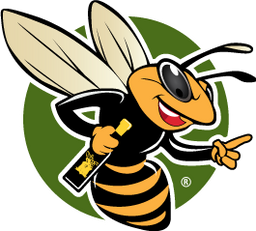Beekeeping is a fulfilling yet challenging endeavor that requires proper protective gear. Among the essential equipment, a beekeeping jacket with a veil stands out as a critical piece for both novice and experienced beekeepers. This protective attire serves a dual purpose: shielding against stings and ensuring ease of movement while tending to hives.
Selecting the right beekeeping jacket can significantly impact your overall experience. With various styles, materials, and features available, understanding the key components of a quality jacket will help you make an informed decision. Whether you need breathable fabric for warm climates or an integrated veil for optimal visibility, choosing the right jacket is crucial for safety and comfort.
Overview of Beekeeping Jackets
A beekeeping jacket provides a protective barrier between the beekeeper and the bees, minimizing the risk of stings. These jackets are designed for comfort and functionality, allowing beekeepers to work efficiently without unnecessary restrictions.
Materials: Beekeeping jackets are typically made from cotton, polyester, or a blend of both. Cotton is known for its breathability and comfort, making it ideal for hot weather. Polyester offers durability and is resistant to wear and tear. Blended materials often provide a balance of both properties, making them versatile for different climates.
Styles and Features:
-
Integrated Veil: Many beekeeping jackets come with an attached veil, offering full-face protection while maintaining visibility.
-
Elastic Cuffs and Hems: Prevent bees from entering through sleeves and openings.
-
Pockets: Convenient for storing tools such as hive tools, brushes, and gloves.
-
Zippered or Pullover Designs: Zippered jackets allow easy wear and removal, while pullover styles are often simpler and lightweight.
Choosing the right jacket depends on your specific needs. Lightweight options are preferable in warm climates, while heavier jackets provide insulation in cooler conditions.
Features of a Good Beekeeping Jacket with Veil
A high-quality beekeeping jacket should offer both comfort and protection. Key considerations include the material, fit, and safety features.
Material and Durability
-
Breathable fabrics like cotton and polyester blends help regulate temperature, preventing overheating during hive inspections.
-
Reinforced stitching extends the lifespan of the jacket by preventing wear and tear from frequent use.
-
Thick yet lightweight fabric provides a balance between protection and comfort, reducing the likelihood of stings.
Comfort and Fit
-
Adjustable elements such as cuffs, waistbands, and wristbands improve the fit and keep bees from entering.
-
Pockets offer convenient storage for essential tools, allowing beekeepers to keep their hands free.
-
A well-fitted jacket should allow easy movement without feeling too tight or bulky.
Safety Features
-
Integrated Veil: Provides full-face protection while maintaining visibility and airflow.
-
Elastic Seals: Prevents bees from slipping through openings.
-
High-Visibility Colors: Some jackets come in bright colors, making it easier to spot beekeepers in the field.
-
Extra Reinforcement: Some jackets feature additional padding in high-risk areas, reducing the chances of stings penetrating the fabric.
Benefits of Using a Beekeeping Jacket with Veil
Protection from Stings
A beekeeping jacket acts as a physical barrier between the beekeeper and the bees, significantly reducing the risk of stings. The durable fabric prevents bee stingers from reaching the skin, while the veil protects the face and neck—two of the most sensitive areas prone to stings.
Improved Visibility and Comfort
Visibility is crucial for effective hive management. A well-designed veil offers a clear, unobstructed view of the hive, allowing beekeepers to inspect frames, locate the queen, and monitor colony health with ease.
Comfort is equally important. A properly ventilated jacket ensures airflow, preventing overheating during long hive inspections. Adjustable fittings also enhance comfort by allowing beekeepers to customize the fit according to their body type.
Confidence While Handling Bees
Working with bees requires patience and precision. A well-equipped beekeeper feels more confident and relaxed when managing hives, leading to more efficient and enjoyable beekeeping sessions.
Conclusion
Investing in a high-quality beekeeping jacket with a veil is essential for both safety and comfort. By choosing the right material, fit, and protective features, beekeepers can enhance their experience while minimizing risks. Whether you're a beginner or an experienced beekeeper, selecting the best jacket tailored to your needs ensures a rewarding and safe beekeeping journey.
Frequently Asked Questions
1. What is the importance of a beekeeping jacket with a veil?
A beekeeping jacket with a veil provides essential protection against bee stings while allowing easy movement and comfort. The veil protects the face and neck, ensuring safety during hive inspections.
2. What materials are commonly used for beekeeping jackets?
Beekeeping jackets are typically made from cotton, polyester, or a blend of both. Cotton is breathable and comfortable, while polyester offers durability. Blended materials provide a balance of both properties.
3. How should I choose the right beekeeping jacket?
Consider factors like material, ventilation, fit, and safety features. Ensure it has an integrated or detachable veil, elastic cuffs to prevent bee entry, and tool pockets for convenience.
4. What safety features should a beekeeping jacket have?
Essential safety features include an integrated veil for facial protection, elastic cuffs and waistbands to keep bees out, and reinforced sections to reduce sting risk. Bright colors can also improve visibility.



